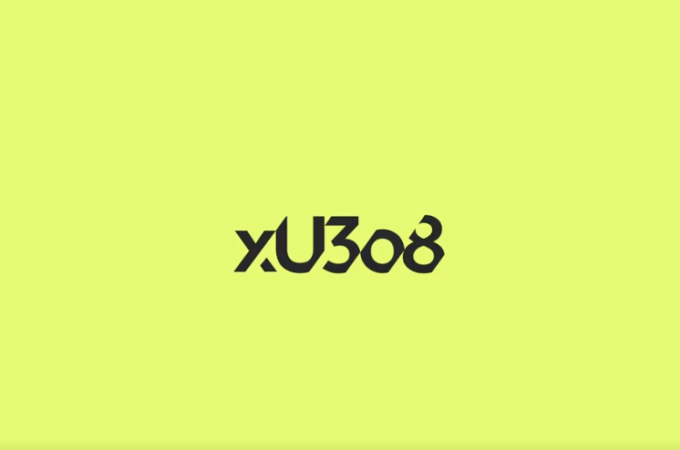
Why Wall Street Is Embracing the Blockchain?
By Cade Metz, writer at Wired.com
Just before Christmas, Overstock.com and its free-thinking CEO, Patrick Byrne, announced that the Securities and Exchange Commission had approved its plan to issue stock over the blockchain, the vast online ledger that drives the bitcoin digital currency.
It was a significant moment. Using cryptographic algorithms running across a vast network of independent computers, the blockchain can more efficiently, accurately, and openly track the exchange of stocks, bonds, and other financial securities—at least in theory. But in the suddenly enormous and widespread movement towards this powerful idea, the bigger moment may not have arrived until about a month later.
[su_pullquote align=”left”]Over the years, Wall Street has employed a single organization to oversee the truth. With the blockchain, this truth can be controlled by an open network.[/su_pullquote]
That’s when the Depository Trust & Clearing Corporation called on the entire financial industry to collaborate on blockchain-like technology. “The industry has a once-in-a-generation opportunity to reimagine and modernize its infrastructure to resolve long-standing operational challenges,” said DTCC president and CEO Michael Bodson. “To realize the potential of distributed ledger technology in a responsible manner and to avoid a disconnected maze of silo-ed solutions, the industry must work together in a coordinated fashion.”
It was a canned quote from a company with perhaps the least exciting name on the planet. But it was a big deal—because the DTCC was delivering such a direct message and because it plays such a central role in the basic operation of the stock market. The DTCC oversees the entire stock settlement system, the system that allows stock to actually change hands after a trade, and it’s co-owned by the biggest investment banks and other financial players on Wall Street and beyond. “We’re owned by the industry,” says DTCC chief technical architect Robert Palatnick, “and everything we do is at the request of the industry.”
[su_pullquote align=”right”] If the Depository Trust & Clearing Corporation wants to embrace the blockchain, that’s a sure sign that Wall Street itself wants to embrace the blockchain.
In other words, if DTCC wants to embrace the blockchain, that’s a sure sign that Wall Street itself wants to embrace the blockchain. Bodson’s message signals the intent not just of his own company but of so many others. And because it controls the actual transactions that underlie the stock market, the DTCC is in a better position than anyone to actually make the blockchain revolution happen.
“DTCC is staking out a claim to be an organizing group within the financial services industry around the blockchain,” says Josh Galper, who runs a financial consulting firm, Finadium, that has closely following the rise of blockchain technologies. And through the DTCC, he says, the market’s big players are mobilizing themselves to exert control and influence over the next generation of blockchain products.
[su_pullquote align=”left”]The blockchain could save banks billions of dollars in regulatory capital charges.[/su_pullquote]
It’s a rather ironic development. The DTCC—and the industry it represents—are embracing a technology that could potentially overturn them. Wall Street, it appears, has learned the lesson that Silicon Valley and its allies have taught industry after industry over the past few decades: embracing your biggest threat is the only way to prevent yourself from being overturned.
Policing the Market
Overstock’s Byrne will tell you that the DTCC is one of the big reasons he and his company started to explore the blockchain as a way of democratizing and streamlining the financial market. For years, Byrne very publicly complained about a Wall Street loophole called naked short selling, and he put some of the blame for this practice on the DTCC.
His claim was that the DTCC wasn’t properly policing the settlement of stock, and that this allowed all sorts of Wall Street players to essentially sell shares they didn’t really have. If we put the stock settlement system on the blockchain, he says, we can close loopholes like this.
That’s just part of Byrne’s vision. And certainly, the DTCC doesn’t agree with claims that it failed to police the settlement system. But at the very least, the blockchain could remove the suspicion of such loopholes. And the DTCC is aware of the irony.
“The premise of the Bitcoin platform—a decentralized, trustless, replicated ledger of transactions—is the virtual opposite of the centralized, trusted, guarded, model of modern securities processing, which has long relied upon DTCC, among others, as a central authority,” reads a treatise the organization released alongside that canned quote from its CEO. In other words, the DTCC realizes that it’s embracing an existential threat.
For this reason, and others, it’s unclear how far the DTCC will take this technology. But given the vast potential of the blockchain, it has no choice to embrace it on some level. And its involvement extends well beyond a canned quote and a white paper. The DTCC is also one of the founding members of a sweeping open source software project that aims to push the blockchain idea across the business world.
[su_pullquote]If the financial industry is to get ahead of the tech curve, it must do so in a considered and collaborative way[/su_pullquote]
Guided by the Linux Foundation—the non-profit that oversees the Linux operating system, the software that serves as the foundation of the modern Internet—this new blockchain-like effort was originally dubbed the Open Ledger Project. Last week, however, the Foundation officially rechristened it the Hyperledger. And it unveiled a governance structure meant to foster collaboration across the project’s myriad members, including big tech names IBM, Intel, and Cisco as well as financial outfits such as JP Morgan, Wells Fargo, the London Stock Exchange, and the DTCC.
The Indisputable Truth
As the DTCC’s Palatnick tells it, collaboration is his organization’s big aim. So many different companies have explored the blockchain for use in the financial markets, he explains. But what’s really needed is an overarching effort to build systems that work acrossall these companies. “Many firms were doing private experiments on this collaborative technology, which seemed a little counterintuitive to us,” he says. “We saw a chance to use our role as industry-owned to create a direction for the industry, and help lead the industry.” If the financial industry is to get ahead of the tech curve, he explains, it must do so in a considered and collaborative way.
[su_pullquote align=”left”] Better tech can make some parts of the market run seamlessly, but people will always be there to keep things complicated.[/su_pullquote]
Given the very nature of blockchain technology, this collaborative approach is the right idea. If a company builds a blockchain-like system inside its own organization, that’s only so useful. The real power of the blockchain is as a distributed ledger that’s outside of the control of any one organization—a ledger that keeps, as Palatnick calls it, “a single indisputable version of the truth.” Over the years, Wall Street has employed the DTCC, a single organization, to oversee the truth of the settlement system. But with the blockchain, this truth can be controlled by a network of machines and an open ledger that all those parties can see. At least in theory.
Who, What, and When
Patrick Byrne believes the blockchain can reinvent myriad markets. In addition to shoring up the stock settlement system, he says, it can streamline and democratize the stock loan market. The global financial market spans about $101 trillion in securities, and at any given moment, about $1.7 trillion is out on loan (by borrowing shares, traders can short sell or hedge their financial bets).
Byrne complains that this market is controlled by a relatively small number of banks, such as State Street, and that these banks run the market according to their own needs and whims. The blockchain, he says, can open up this market, allowing everyone to participate and closely track who holds what stock when.
Byrne even views the blockchain as a way of reinventing the public stock market itself. The SEC has approved Overstock’s plan to issue company stock over the blockchain. He sees this approach as a new way for companies to raise money—a new way to IPO. As he describes it, we could put the entire stock market on the blockchain, a view echoed by top executives at Nasdaq, among others—a hub for tech IPOs.
Some view this kind of talk with skepticism. Galper says that the stock loan market isn’t as broken as Byrne would have us believe, and that the idea of issuing stock over the blockchain is still hard to judge. Certainly, the blockchain doesn’t operate fast enough today to drive the high-speed trading of the public stock market. But as Byrne tries to reinvent the stock loan market, State Street, one of the banks he’s challenging, has also joined the Hyperledger project. And so many other big-name Wall Street players are also exploring these ideas.
Nasdaq, for one, is building a private stock exchange using the blockchain. Companies like Goldman Sachs are investing in Digital Assets Management, a blockchain startup run by former JP Morgan exec Blythe Masters. And this whole movement takes on added meaning, Galper says, with the involvement of the DTCC: “A DTCC investment really makes it real.”
Planning Obsolescence?
Still, there’s no guarantee that the DTCC will take the blockchain idea to its logical extreme. After all, a truly distributed blockchain-based stock settlement system could eliminate the need for the DTCC.
Certainly, the DTCC is not embracing the blockchain proper—the blockchain that underpins bitcoin across the Internet on countless independent machines. Through the Hyperledger project, the DTCC is instead exploring a new version of the blockchain that businesses could run on their own machines. “One system is really aspirational,” Palatnick says, referring to the possibility of a single public ledger that everyone uses. What’s more realistic, he says, is establishing standards that allow banks to plug their private ledgers into one other.
This stops short of “a single indisputable version of the truth.” Parts of the market still sit behind the closed doors of the big banks. But it’s important to realize that the blockchain idea has its limits. Even if the industry does take the technology to its logical extreme, it could still hit a wall. It could still run into human inertia, human error, and, yes, human greed. Wall Street is ultimately motivated by money, not ideas.
As Galpar says: “There’s a lot that happens outside the technology.” In other words: humans get in the way. Better tech can make some parts of the market run seamlessly, but people will always be there to keep things complicated.
Image via Gettyimages,
Writtern by: Cade Metz
The post Why Wall Street Is Embracing the Blockchain—Its Biggest Threat first appeared in the Wired Business magazine





